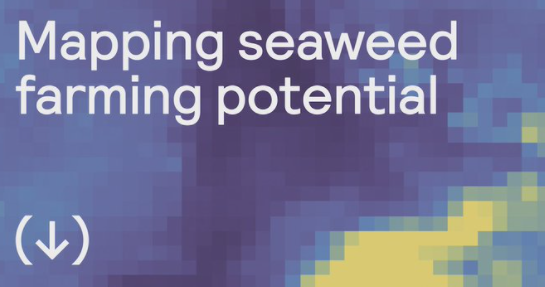
Overview
NEWS
Seaweed-based Carbon Sequestration Online Mapping Tool
The productivity, costs, and potential climate benefits of seaweed farming are spatially heterogeneous and scale-dependent, and it is important to evaluate the key sensitivities and trade-offs relevant to investors and decision-makers. We have developed coupled biophysical and technoeconomic models (see preprint manuscripts in links) to begin answering these questions. We worked with CarbonPlan to put together an interactive explainer and a mapping tool to make the results more accessible. We also discuss key insights and priorities for future research.

Offshore macroalgal farming has potential to become a thriving marine biomass industry. MACMODS is a computational framework to design, optimize, site and evaluate this nascent industry.
The United States has the world’s largest marine Exclusive Economic Zone and has the potential to build and grow a thriving marine biomass industry for the production of fuels, chemicals, feed, and food. But, in order to assess the possibility of offshore cultivation, aquaculture needs an improved set of tools for locating optimal macroalgal farm sites, evaluating farm designs, assessing new macroalgal cultivation techniques to maximize productivity, and for predicting the influence of cultivation on coastal ecosystems.
Since 2018, a team of University of California scientists have been working alongside aquaculture industry partners and the Southern California Coastal Water Research Project (SCCWRP) to develop a modeling tool to design, optimize, site, and evaluate the sustainability of large-scale offshore macroalgal farms. You can learn more about the MACMODS model in a paper recently published in the Frontiers of Marine Science led by Dr. Christina Frieder.

Overview of MACMODS modeling platform.
Proper design requires a framework capable of capturing the complex interplay between currents, surface waves, turbulence, canopy architecture, nutrient and light fields, and biological processes in an ever-changing ocean environment. To meet this challenge, we are developing the MacroAlgae Cultivation MODeling System (MACMODS) which integrates a state-of-the-art, open-source regional ocean model with a fine-scale hydrodynamic model. This model will be capable of resolving turbulent fluxes within a canopy at sub-meter resolution, and features a macroalgal growth model that accounts for hydrodynamically-mediated biological processes like the enhancement of nutrient uptake due to within canopy flows, plant motion, and waves. These tools are key to evaluating different farm designs, in order to maximize yield, while minimizing cost and environmental impacts. Upon completion of this project we expect to have a computational framework that integrates regional scale hydrodynamics, farm scale hydrodynamics, and plant-scale growth models that can be effectively utilized to design and deploy macroalgae farms.
